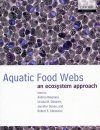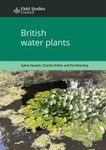Edited By: A Belgrano, U Scharler, J Dunne and B Ulanowicz
262 pages, 8 col plates, 41 line illus
![Aquatic Food Webs Aquatic Food Webs]()
Click to have a closer look
About this book
Contents
Customer reviews
Related titles
About this book
Food webs have always been of interest to ecologists, and remain central to questions about stability and diversity. Furthermore, they are one of the main areas in which ideas about networks and complex systems are being applied and developed in ecology. The focus of this volume is upon aquatic food webs (where many of the recent advances have been made), but such is the interest in food web theory that the book will be of relevance and use to a far wider audience of ecologists.
Contents
Foreword; Introduction; 1. STRUCTURE AND FUNCTION; 1. Biosimplicity via stoichiometry: the evolution of food-web structure and processes; 2. Spatial structure and dynamics in a marine food web; 3. Role of network analysis in comparative ecosystem ecology of estuaries; 4. Food webs in lakes - seasonal dynamics and impact of climate variability; 5. Pattern and process in food webs: evidence from running waters; 2. EXAMINING FOOD WEB THEORIES; 6. Some random thoughts on the statistical analysis of food web data; 7. Analysis of size and complexity of randomly constructed food webs by information theoretic metrics; 8. Size-based analyses of aquatic food webs; 9. Complexity in aquatic food webs: an ecosystem approach; 3. STABILITY AND DIVERSITY IN FOOD WEBS; 10. Modelling food-web dynamics: complexity-stability implications; 11. Is biodiversity maintained by food-web complexity? - The adaptive food-web hypothesis; 12. Climate forcing, food web structure, and community dynamics in pelagic marine ecosystems; 13. Food web theory provides guidelines for marine conservation; 14. Biodiversity and aquatic food webs; 4. CONCLUDING REMARKS; 15. Ecological network analysis: an escape from the machine; Afterword; References; Index
Customer Reviews
Edited By: A Belgrano, U Scharler, J Dunne and B Ulanowicz
262 pages, 8 col plates, 41 line illus
This book gives a good background for all those interested in the theory and modelling aspects of aquatic food webs. There are certainly lessons to be learnt here for many. Journal of Plankton Research, Volume 28, Number 10 This is an important synthesis for foodweb ecologists to read and an accessible text for other ecologists. Mark Young, Bulletin of the British Ecological Society 2006, 37:1 ...the book provides a very modern and interesting presentations of current food web research. It is strongly recommended for readers interested in new methodological developments or conceptual novelties and are sensitive to spatio-temporal scale-dependence or the history of some great ecological problems...presents excellently the brand new developments in this huge field. It is not a book for aquatic ecologists only! Community Ecology 6(2): 253-255, 2006 Graduate students and professionals interested in communities and ecosystems, particularly those who work on food webs or in aquatic systems, will be well served to take a look at this book. Trends in Ecology and Evolution, April 2006.


































